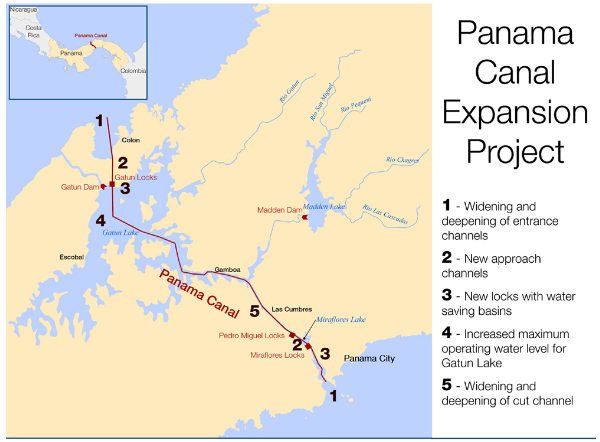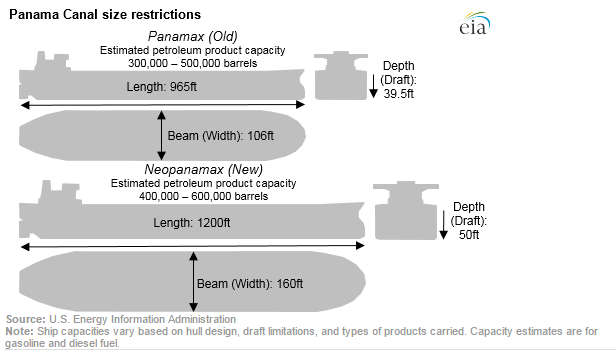Nine-Year, $5 Billion Expansion Project Complete
The Panama Canal was opened in 1914, and for a century, shippers have realized a more efficient route to Asia. But during more than a century of use, ships have increased in size and capacity, but the shortcut between the Atlantic and Pacific has not, until this past weekend.
Based on six years of research, work on the Panama Canal Expansion began on September 2007 at a total cost of US$5.2 billion. The Panama Canal Expansion was completed on June 26, 2016, and the Panama Canal Authority inaugurated a new third set of locks, allowing for the transit of larger ships.
The largest project at the canal since its original construction, the expansion project created a new lane of traffic along the canal through the construction of the new set of locks, doubling the waterway’s capacity. The existing locks allow the passage of vessels that can carry up to 5,000 TEUs. After the expansion, Post-Panamax vessels can transit through with up to 13,000/14,000 TEUs.
The project resulted in:
- New Locks (Third Set of Locks)
• Pacific Access Channel
• Improvement of Navigational Channels (Dredging)
• Improvements to Water Supply
But Crude Supertankers Keep Getting Bigger
For the oil and gas industry, the gains offered by the new canal are limited. The economics of shipping dictate that the larger the ship and the greater volume it can carry, the better the economics become.
EIA noted recently that, “Crude oil typically is loaded on vessels classified as Very Large Crude Carriers (VLCC) or Ultra-Large Crude Carriers (ULCC), both of which are too large to transit the Panama Canal fully laden, even through the new locks. Petroleum products are typically loaded on several smaller vessels, some of which can transit the existing and new canal dimensions, depending on a ship’s hull design and restrictions on depth in water (draft). This means that most of the petroleum-related traffic through the canal will be petroleum products rather than crude oil.”
The size restrictions for ships running the canal have increased from a maximum of 500 thousand barrels to now 600 thousand barrels. This increase will help, but as EIA noted, the Neopanamax ships are still smaller than the supertankers used to transport crude oil.
Two Million Barrels Won’t Fit
The Knock Nevis is the longest ship ever built (1503 feet long) and is used for the transport of crude oil. This supertanker is capable of transporting up to 2 million barrels of crude oil. While the length of this ship isn’t dramatically above the max length allowed through the canal, it still carries four times the capacity of the Neopanamax ships.
The shipping channels for crude oil will likely remain unchanged, but the natural gas liquids business will see a boost in activity. “Previously, the size limitations of the canal created logistical bottlenecks for U.S. propane exports to reach markets in Asia, forcing shippers to perform ship-to-ship transfers. The new, larger Panama Canal locks will allow most Very Large Gas Carriers (VLGC), the type of ship that carries propane and other hydrocarbon gas liquids (HGL), to transit, likely reducing or even ending the practice of ship-to-ship transfers,” the EIA said.
Reduced Travel Time for LNG From U.S. Markets
The increased size of the canal will be most beneficial to liquefied natural gas (LNG) shipments. According to EIA, the expanded canal will now be able to accommodate 90% of the world’s current LNG tankers with LNG-carrying capacity up to 3.9 billion cubic feet (Bcf). Prior to the expansion, only 30 of the smallest LNG tankers (6% of the current global fleet) with capacities up to 0.7 Bcf could transit the canal. The expansion has significant implications for LNG trade, reducing travel time and transportation costs for LNG shipments from the U.S. Gulf Coast to key markets in Asia and providing additional access to previously regionalized LNG markets.



